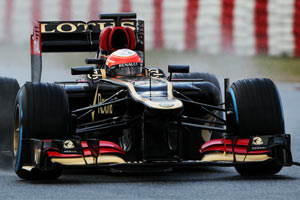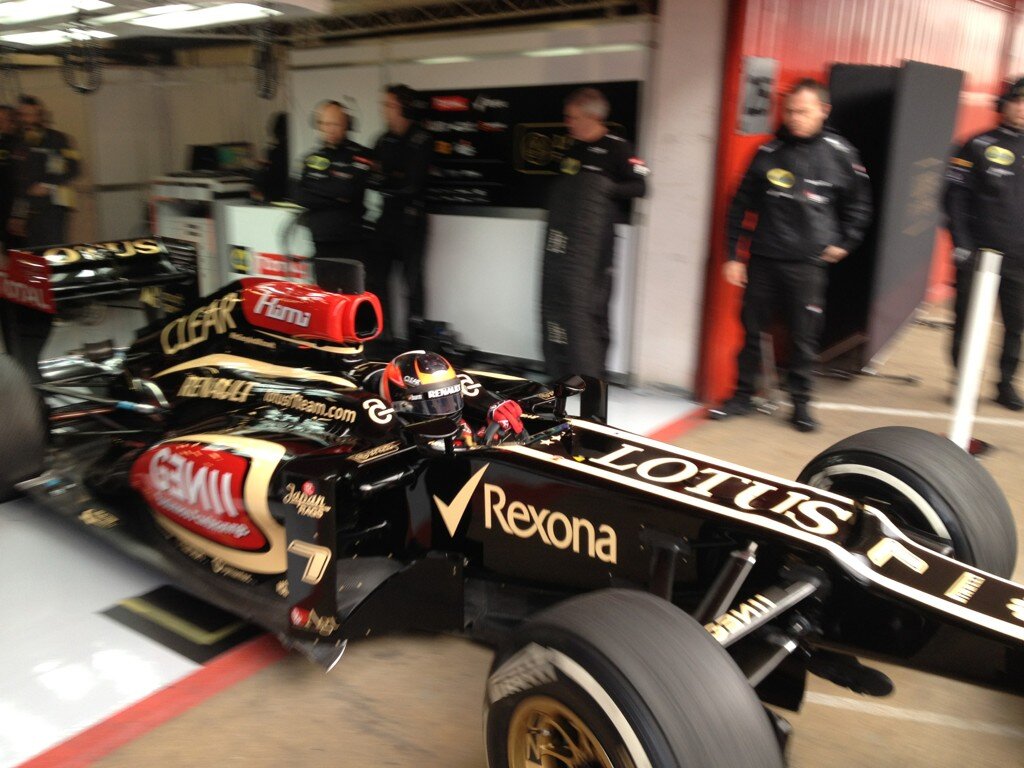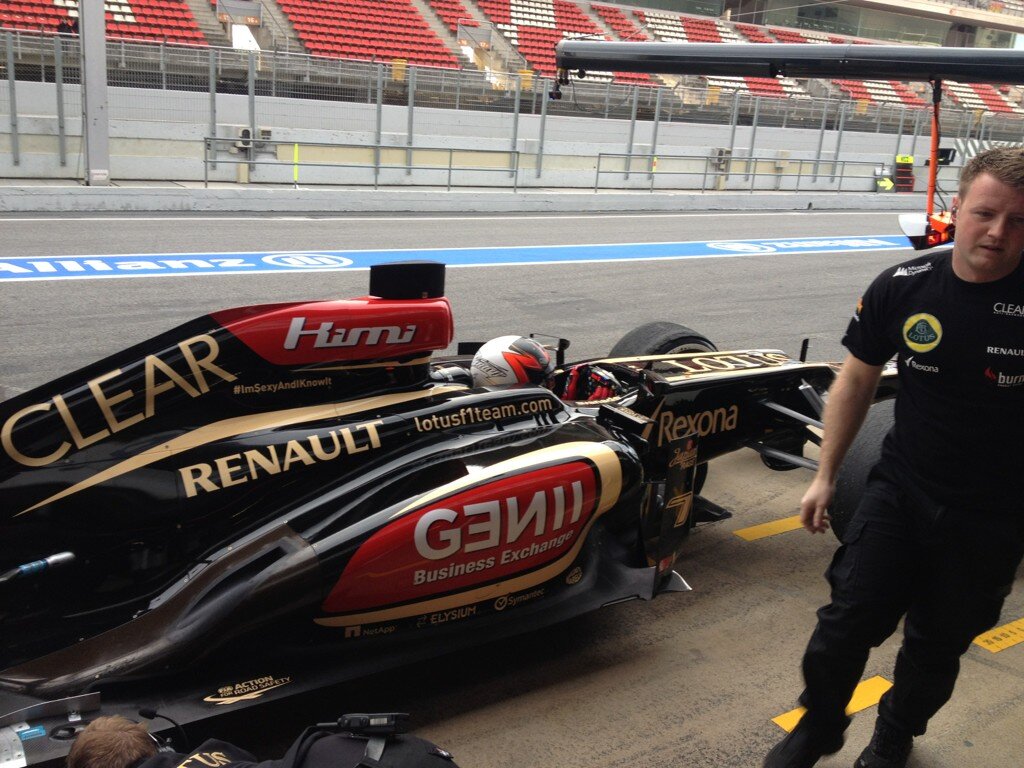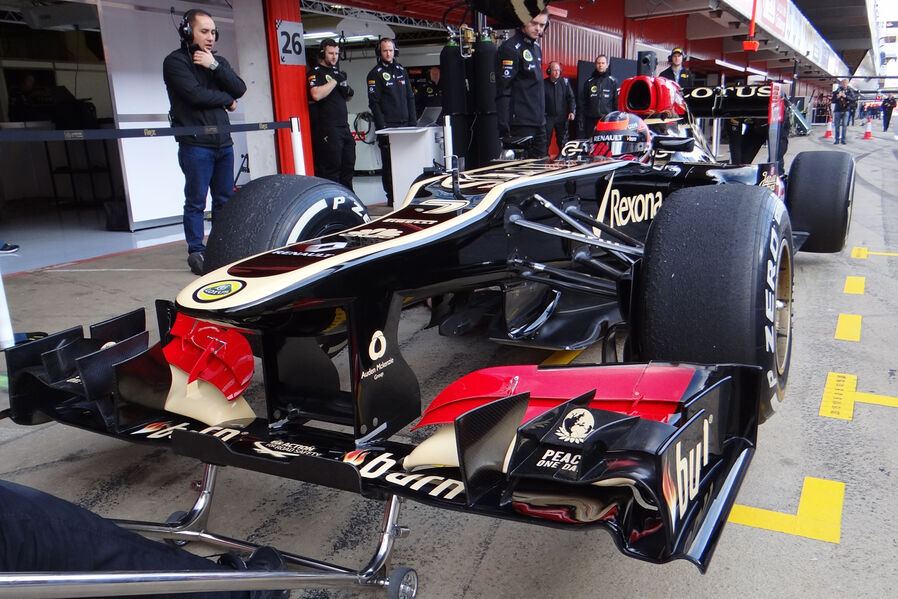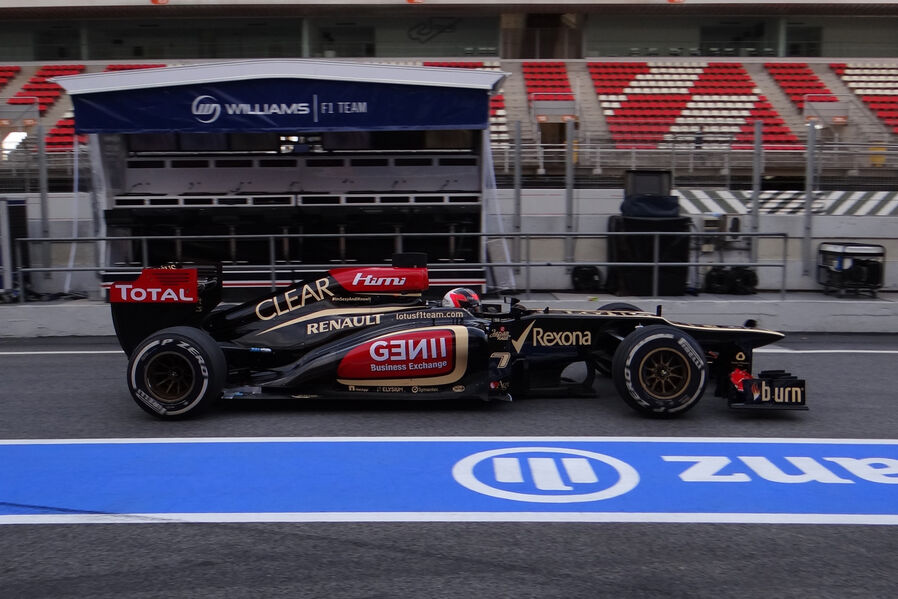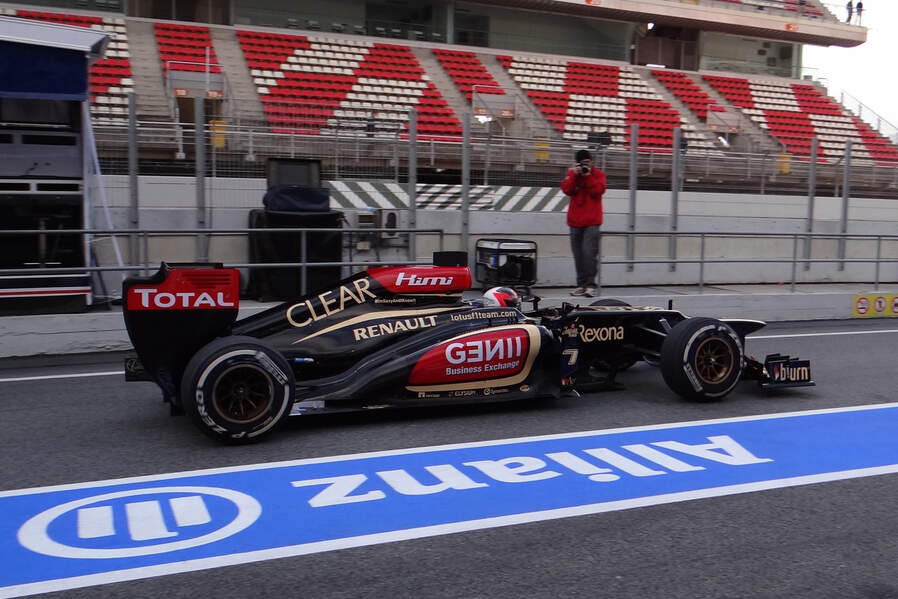shelly wrote:
- stall behaviour: If I suppose that stall is achieved by blowing out of the slot, after stalling the suction peak on the wing is lost, so the pressure is higher and the hypotetical blowing is less effective, which could lead to reattachment. That seems undesirable. By sucking instead, the higher the pressure on the lower part of the wing, the greater the suction effect
-flow viz: though I am not an expert in interpreting flow viz, in the picture above that shows the separated wing I did not recognize a separation pattern on the slotted pillar, which I expected if the slots were blowing. )But maybe I have wrong expectation - this is not a strong point)
You don't have to be an expert to see patterns on flow visibility paint. "L" shaped vertical pipe blows rear wing's main plate. The flow pattern is in line with the slots on "L" pipe (see pink arrows).

shelly wrote:
-pipe sizes: when I took a look at renault's f-duct on another thread here
http://www.f1technical.net/forum/viewto ... 0&start=15, I noticed that the pipes were sized very differently:
http://www.formula1.com/wi/full/ta_arti ... le_785.jpg
the ears were much smaller, the pipe blowing on the wing and the other pipe discharging between mainplane and beamwing had more or less the same section. On the drd there are much bigger ears, that feed a big main duct, with a much smaller pericope duct - if the working principle is the same, expect for the "passive" switching instead of driver operated, why are the pipes' sizes that different?
F-Duct operated diffrently than DRD, because the driver was switching the air. The stall was achievent diffrently because rear wing's main plate had slit in it (which made the wing 3 parts in general), air from -Duct was bowing the main plate and exiting trough the slit and stalled bottom of the main plate.
I would imagine to achieve passive fluid switch you need more air, hence bigger intakes.
shelly wrote:
-fluidic switch: I have seen no hypotesis about how it could work, and it is difficult for me to imagine one. If I suppose that the periscope is drawing air in, there is no need for a fluidic switch, you need just a venturi section (from there comes the analogy with a mr proper spray)
In this scenario the wing would be stalled all the time, wouldn't it? Because always there would be lower pressure in the venturi tube.
shelly wrote:
-monkey seat on the outlet: if the periscope is blowing above a certain speed when the main pipe cannot expel any more flow, why is the big monkey seat needed? In 2013 lotus have got rid of the big monkey seat, but they still need the tongue after the exit of teh main pipe to drive the fluid. If the periscope is sucking and there is a throat in the main pipe to achieve the lower pressure needed, then the monkey seat is necessary to pull the flow out from the throat
How do you know that they got rid of monkey seat? For me more sense makes the idea that they didn't have time to fit it, they were using very old (from the middle of the 2012 season) rear wing after all.
shelly wrote:
-shape of the periscope / main pipe junction: it seems consistent with a 90° connection between periscope and main pipe, which is not necessary if the slots are blowing, whereas it is if the slits are sucking it is needed. But it is difficult to detect the exact shape of teh joint, so this is not a strong point either.
The "L" shape (as Scarbs is calling it) is the result of the rules that banned the use of shark fins. On the image below, the yellow colored colored area must be free of any aero gizmos


